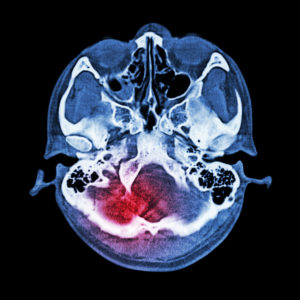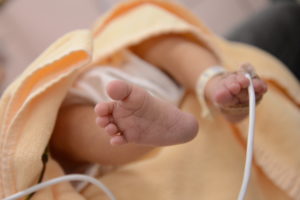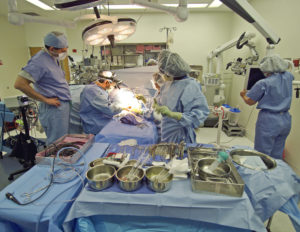One of the most serious types of birth injuries is cerebral palsy, or CP.
Our Oregon cerebral palsy lawyers know that this is a devastating diagnosis for any parent to hear.
Most parents have not heard about cerebral palsy until they receive that initial diagnosis for their beloved child.
Cerebral palsy is a disorder or group of disorders which disrupt how a person’s brain functions due to damage sustained while the brain is rapidly developing.
Usually the damage is due to physical injury to the brain which is commonly caused from an oxygen deprivation, but the injury could also be caused by physical damage such as trauma.
The damage causes lesions or scar tissue on the brain which prohibits and disrupts the growth and development of the brain in that area.
With cerebral palsy, the lesions and damage to the brain is in an area which governs motor function, or movement.
This means that a person who has cerebral palsy will likely have difficulty with moving limbs and muscles, everything from walking, using fingers, eating or drinking, and even to laying down comfortably.
While cerebral palsy may be caused by unavoidable conditions or inherited genetics, cerebral palsy could be caused by
Oregon medical malpractice due to a healthcare provider’s careless, reckless, negligent, and even grossly negligent conduct.
Some examples of this culpable conduct which could cause a birth injury like cerebral palsy include the following:
- Dangerous and improper use of extraction tools such as forceps or vacuum extractor;
- Failing to recognize, diagnose, and treat an umbilical cord rupture or prolapse;
- Improperly monitoring accelerations/deaccelerations (contractions) which restrict or prohibit oxygen flow to the baby;
- Delaying an emergency c-section;
- Failing to secure an airway after birth;
- Overuse of Pitocin or other labor-inducing drugs;
- Inadequately monitoring the baby’s oxygen saturation, pulse, and stress level;
- Mishandling the baby after birth, including causing head injuries or not addressing bleeding or excessive bruising;
- Improper prenatal care and treatment;
- Failing to diagnose eclampsia or preeclampisa;
- Improperly or failing to monitor the mother’s oxygen saturation, blood pressure, pulse, blood sugar, iron, and other important factors;
- Failing to monitor for fetal distress; and
- Several other causes.
Generally, as a parent you will rarely if ever know if these factors contributed to your loved one’s CP.
In fact, healthcare providers will often try to label your child’s CP as unavoidable right from the start.
But our
Oregon cerebral palsy lawyers know that this is a trick used by healthcare providers, and we have experts, trained staff, and experienced lawyers waiting to review your case to look for the common causes above and many other possible causes.
Classifications of Cerebral Palsy
There are several ways that cerebral palsy is classified.
The most common is by severity and then by type.
The classifications depend on the extent of the damage and the location of the damage.
The severity and location of the damage dictate the type of disability caused by cerebral palsy, such as muscle tone, strength, dexterity, movement, or appearance of tremors.
Generally when discussing severity, the factor is usually the amount of damage done to the brain.
Severity is usually classified as follows:
Mild Cerebral Palsy – Generally means a person can move without assistance and his or her daily activities are not limited to a great extent.
Moderate Cerebral Palsy – A person will need some mobility assistance such as braces, canes, or a walker.
Medications are also likely, and adaptive equipment may be necessary to help accomplish daily activities.
Severe Cerebral Palsy – When a person has severe cerebral palsy, he or she is likely going to need a wheelchair and will have significant, disabling, and debilitating challenge completing daily activities.
Types of Cerebral Palsy
In addition to the severity of cerebral palsy, there are several different types of cerebral palsy.
The type depends on the location of the damage in the brain.
Generally, there are two overarching classifications of cerebral palsy.
The first type is
spastic cerebral palsy, which is characterized by increased muscle tone, and the second type is
non-spastic cerebral palsy, which is a deceased or fluctuating muscle tone.
More broadly, the different types of cerebral palsy are the following:
Athetoid Cerebral Palsy – This type of CP is caused by damage to the basal ganglia and is characterized by slow, deliberate, and usually twisting movements of the extremities.
Muscle twitches are common and muscle tone can vary from excessive to flaccid.
Dystonic Cerebral Palsy – Also caused by damage to the basal ganglia, this type of cerebral palsy can cause restlessness, muscle spasms such as twisting, abnormal postures, jerky movements, or slower movements.
Ataxic Cerebral Palsy – This is a rarer type of CP which is caused by damage to the cerebellum and, as a result, causes tremors, shaky movement, and difficulty with walking, balance, and fine movements such as writing.
Choreoathetoid Cerebral Palsy – This is a subset of athetoid cerebral palsy ,but generally exhibits disabling or abnormal movements in the face, shoulders, and hips.
These movements are typically jerky and involuntary movements.
Bend/Portland, Oregon Cerebral Palsy Lawyers
If you or a loved one have been seriously injured or killed as a result of medical malpractice contact the
Oregon Medical Malpractice Lawyers at
Kuhlman Law at our number below or fill out the intake form.
We offer a free initial case evaluation and handle cases on a contingency fee which means that you pay no money unless we recover.
We handle cases throughout the state including Bend and Portland Oregon, Redmond, Central Oregon, Multnomah County, Deschutes County, Salem, Eugene, Corvallis, Lane County, Medford, Gresham, Albany, Medford, Beaverton, Umatilla, Pendleton, and Hillsboro.
We also have an office in Minneapolis, Minnesota and take medical malpractice cases throughout the Twin Cities, including St. Paul, Hennepin County, Ramsey County, Dakota County, Washington County, Anoka County, Scott County, Blaine, Stillwater, and Saint Paul Minnesota.
Please act quickly, there is a limited time (Statute of Limitations) in which you can bring a claim under the law.






